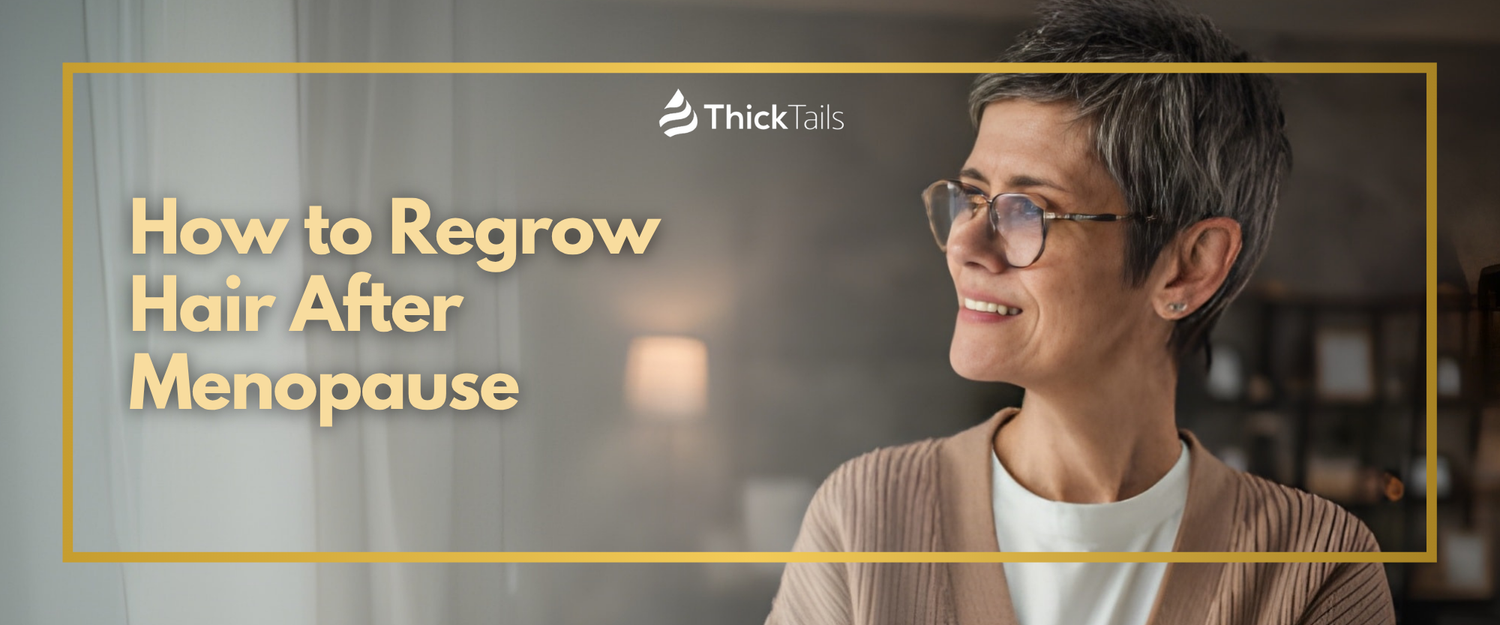When women reach their 40s, they become more conscious of both physical health and appearance. Aging slows down bodily functions, and cells gradually deteriorate as time passes by. However, ignoring the early aging signs can worsen and may lead to irreversible effects.
Among all the common signs of aging, alopecia or hair loss is one of them. It can happen at any time, but it usually manifests around your 40s. What may it cause hair loss problems, and how can you mitigate the chances of suffering from losing your hair? Learn more about why women over 40 suffer from hair loss and what you can do to treat this hair growth issue.
The Common Hair Loss Causes: Why You Lose Your Hair When You're Over 40
Hair loss happens to every woman because losing hair strands is a part of the hair growth cycle. However, when you lose too many hair strands in a day (more than the average), you may need to be alarmed about your situation and look into the root of your hair growth problem.
1. Aging
The aging process is a slow yet beautiful process. However, aging can also slow down the hair growth rate and may even cause hair cells to die along the process. As a result, some hair follicles weaken, lose hair strands then stop growing new ones.
2. Perimenopause
Menopause signifies the termination of your menstrual cycle, but it doesn't happen suddenly. Most women begin experiencing the early signs of menopause during the perimenopausal stage, which literally means "around menopause." This stage starts in your late 30s to your early and mid-40s. So, what exactly happens during perimenopause? During this phase, your hormone levels become erratic. The increase and decrease can affect hair follicle growth and development, causing hair strands to fall.
3. Androgenetic Alopecia (AGA)
Another common hair loss problem among many women in their 40s is androgenetic alopecia (AGA) or female-pattern baldness. This hair loss condition happens due to hormonal imbalance caused by a drastic decrease of estrogens in the body. The more 5α-reductase enzymes are present in the body, the higher the chance that these androgens or male sex hormones get converted into dihydrotestosterone or DHT, which are considered potential threats to hair growth. They can bind your hair follicles until they shrink and die, resulting in thinning hair and hair loss. Many women start experiencing the effects of AGA in their 40s since their ovaries start slowing down estrogen production.
4. Genes
Yes, your bloodline also has something to do with how your hair grows and loses its strands. Parents losing their hair in their early 40s and 50s also give their children a greater chance to experience the same fate due to genetics.

5. Stress
Being an adult can be stressful when responsibilities overwhelm you. Once stress builds up, it can take a toll on your health. Specifically, cortisol (stress hormones) levels increase drastically, and a continuous and prolonged increase in cortisol can miniaturize your hair follicles and hamper proper hair growth.
Stress can also induce other hair loss conditions, such as alopecia areata and trichotillomania. Alopecia areata (AA) is an autoimmune disease that triggers your immune system to attack the cells in your hair follicles, which can affect hair growth.
Your brain also has other methods to cope with extreme stress, and one of them is called trichotillomania. This stress-induced condition pushes you to pull the hair strands on your head, eyebrows, and other areas with hair, thereby making you suffer from hair loss.
6. Premature Menopause
Women undergo the menopausal stage in their late 40s up to their early and mid-50s. However, rare cases and certain factors may instigate early menopause. Having your ovaries removed surgically also indicates that your body won't be able to produce estrogens, giving leeway for androgens to cause hair growth havoc. Other factors such as genetics, lifestyle, or medications can also cause premature menopause.
7. Traction Alopecia
Being young doesn't give us the pass to be careless with our hair care habits. The adverse effects of mishandling your hair since you're young may manifest in your 40s. You will not only suffer from thinning hair problems, but you may also suffer from a hair loss condition called traction alopecia. This type of alopecia results from tugging your hair too much, especially with tight hairstyles like braids, weaves, corn rose, and ponytails. Pulling your hair strands aggressively for long periods can tear and scar your hair follicles, preventing them from growing new hair again.
8. Lifestyle Problems
Genetics and medical conditions are not the only causes of hair loss in your 40s. Your lifestyle, including your sleep and diet, are also significant factors that can cause your hair to fall out.
For instance, inadequate sleep can pose several risks to one's health, especially on hair growth. Various studies found the relevance of sleeping problems with stress and hair growth issues. A lack of sleep raises cortisol levels, which, in turn, increases the chances of harming your hair follicles. Not only that, but sleep also affects the hair growth cycle. Sleep disruption can also disturb the hair growth process, affecting hair cell proliferation and hair follicle growth.
Diet also affects hair density and hair count. For example, problems induced by excessive and prolonged alcohol consumption might manifest in your 40s, with hair loss being one of them. Restrictive diets also hinder you from receiving the essential nutrients for hair follicle growth and development.

5 Achievable Ways to Prevent Hair Loss Problems in Your 40s
There's no need to get anxious over suffering from hair loss problems. You can still prevent alopecia from ruining your 40s. Check out the following ways to stop inducing hair loss.
1. Learn stress management.
Stress isn't something you can avoid for life; there will always be stressful situations anytime and anywhere. However, you can do so much better than letting the stress get into you. You may focus on doing enjoyable things such as your hobbies and recreational or relaxing activities. By learning ways to cope with stress and handle nerve-racking circumstances, you can stabilize stress hormones and reduce the chances of hair loss catastrophe.
2. Let your hair loose now and then.
As mentioned earlier, traumatic hairstyling for a long time can damage hair follicles and may even instigate traction alopecia. Hence, while you are young, skip on tight hairstyles whenever you can. Letting your hair loose allows your hair strands to relax and mitigate the chances of scarring your hair follicles. But also make sure to condition and dry your hair properly to prevent getting frizzy hair.
3. Increase your phytoestrogen intake during perimenopause.
A significant decrease in estrogen levels is the primary cause of perimenopausal problems, such as thinning hair, hair fall, and alopecia. Therefore, to thwart hormonal imbalance from triggering such issues, you will need a healthy amount of phytoestrogen-enriched foods in your diet. Phytoestrogens are plant compounds that have estrogen-mimicking properties. They can help organs to function normally despite the estrogen deficiency. Examples of foods rich in phytoestrogens are soybeans, flax seeds, sesame seeds, and dried beans.
4. Be more gentle when handling your hair.
Hairstyling doesn't only involve coiffures, but it also pertains to the products and tools you use to manage your hair. When you reach your 40s, your hair starts to thin, weaken and become more sensitive to physical or chemical tension. Hence, it would always be best to be more cautious with the hair growth products you apply and the hairstyling tools you use to avoid any means of hair damage and hair loss.
5. Indulge yourself in keratin and anti-hair loss treatments.
It is rare for women to lose all of their hair strands in their 40s, but thinning hair may manifest earlier as a sign of aging or hormonal imbalance issues. If left ignored, your hair eventually starts to break loose and cause hair fall problems. To prevent that from happening, you need to boost protein enrichment to inhibit strand breakage. It would also be best to use anti-hair loss products to prevent alopecia.
The Big Question: Is HRT Necessary to Fight Hair Loss in Your 40s?
During their 40s, many women experience unfavorable changes in hair growth due to hormonal imbalance. This concern has brought up Hormone Replacement Therapy (HRT) as hair loss treatment or prevention for women over 40. But, is there a need for middle-aged women to undergo this therapy? If the origin of your hair loss problem is estrogen deficiency, you will most likely need HRT. It will be a safe and effective treatment under the guidance of your physician. On the other hand, if your hair growth issue roots from other factors such as lifestyle, diet, or stress, HRT won't be necessary. Remember that HRT is for those who only need it because messing up your hormone levels without your doctor's consent and medical advice may worsen the problem and cause other health ramifications.
Hair Loss Among Women is Beatable.
No matter how much assurance women receive from others, their concern over their physical appearance will always be there. However, don't let these concerns hinder you from making the most of your adulthood. With the proper precautions, a healthy lifestyle, and the best treatments, every woman can enjoy their 40s without needing to worry about losing their hair.
Never Underestimate Hair Loss Problems.
Hair loss happens every day among women, but excessive hair falling out is quite alarming, for it can be a sign of a hair loss problem. Learn more about female alopecia and the best hair growth products for your hair loss treatment.







